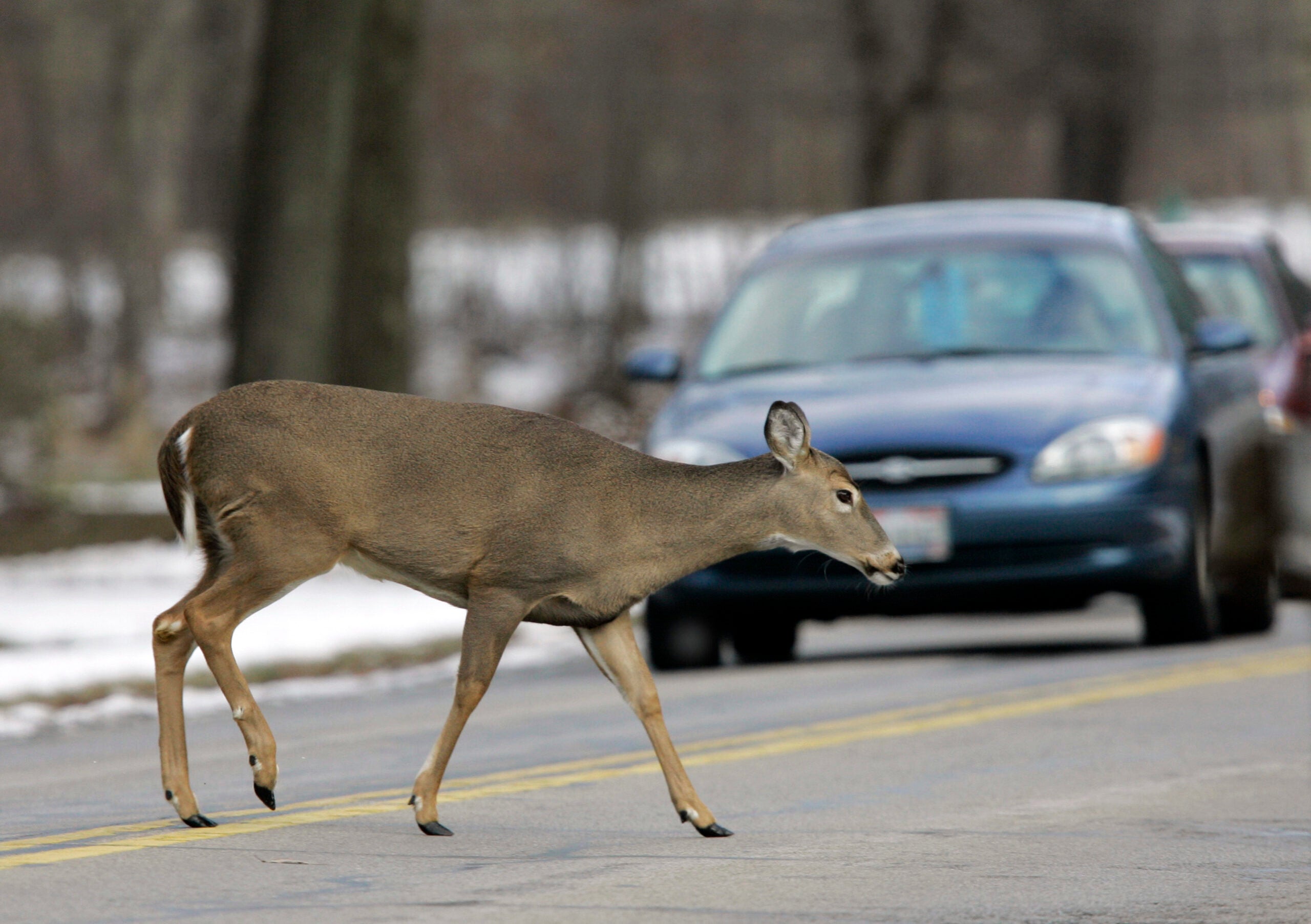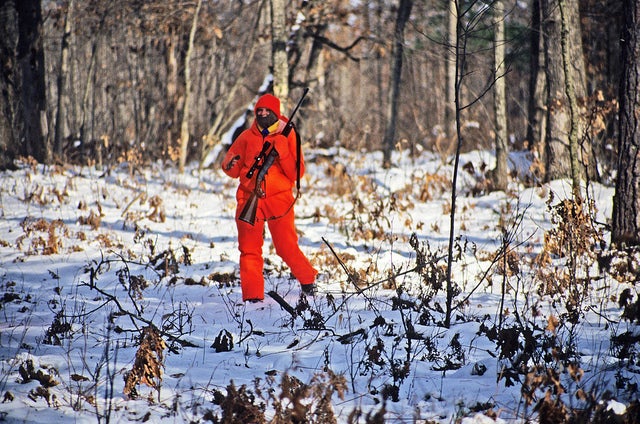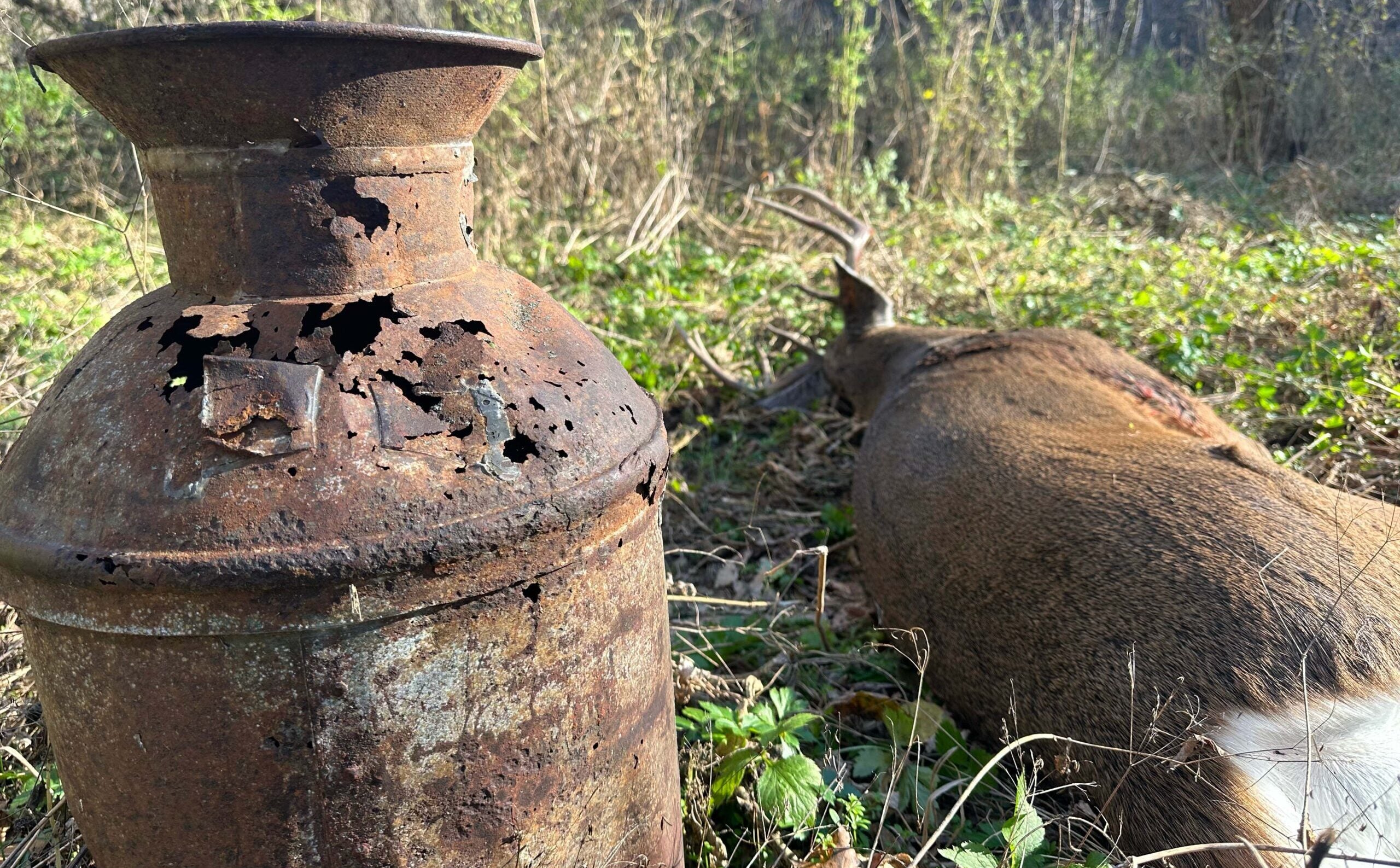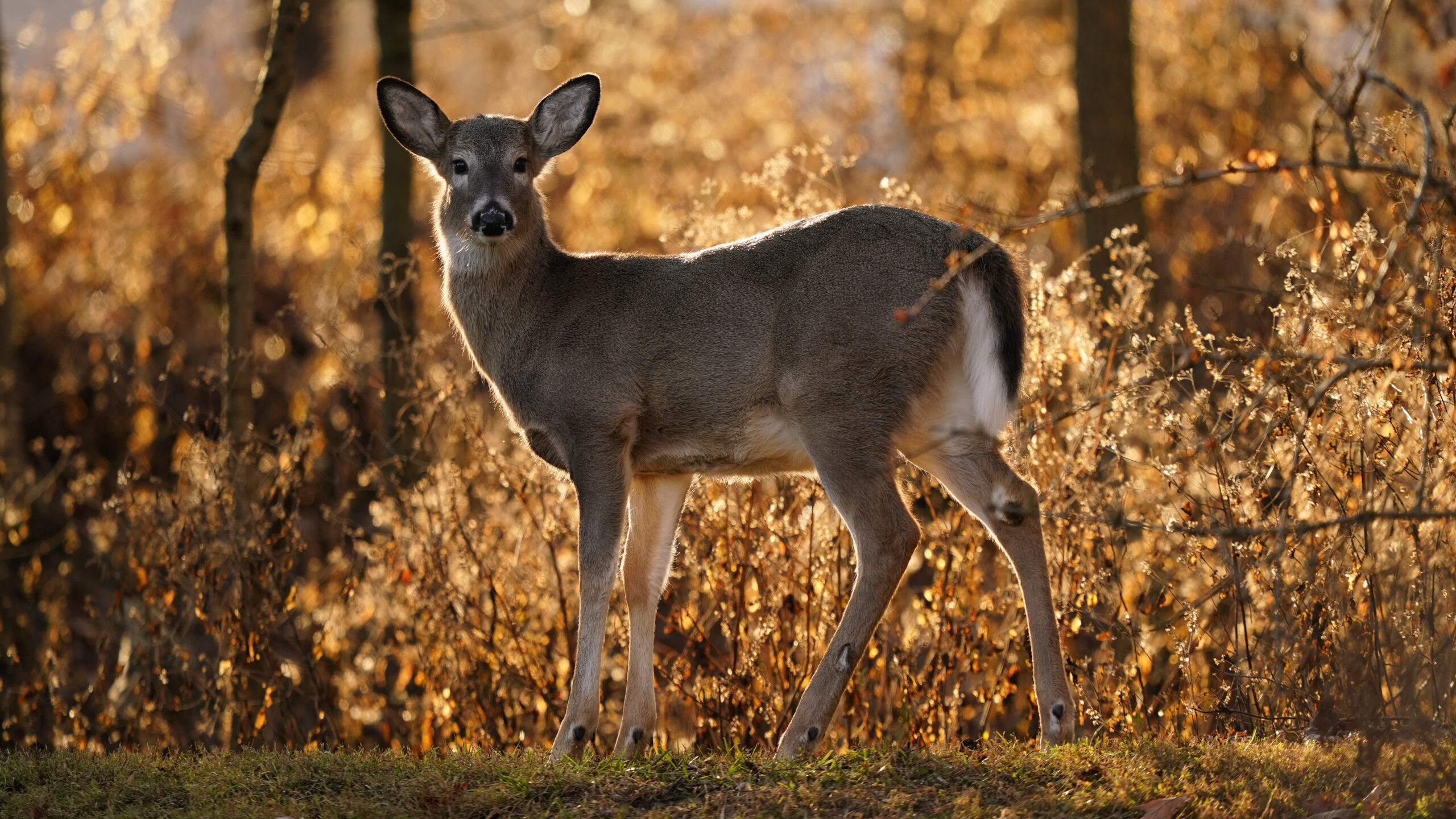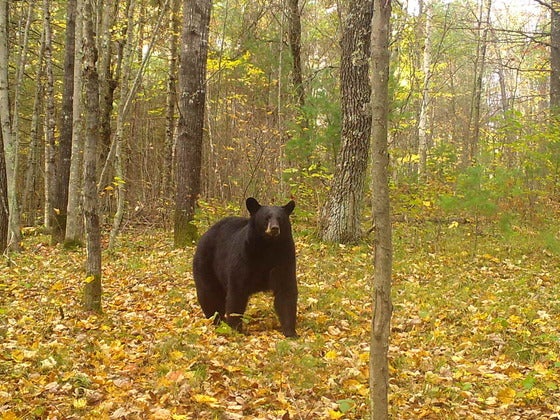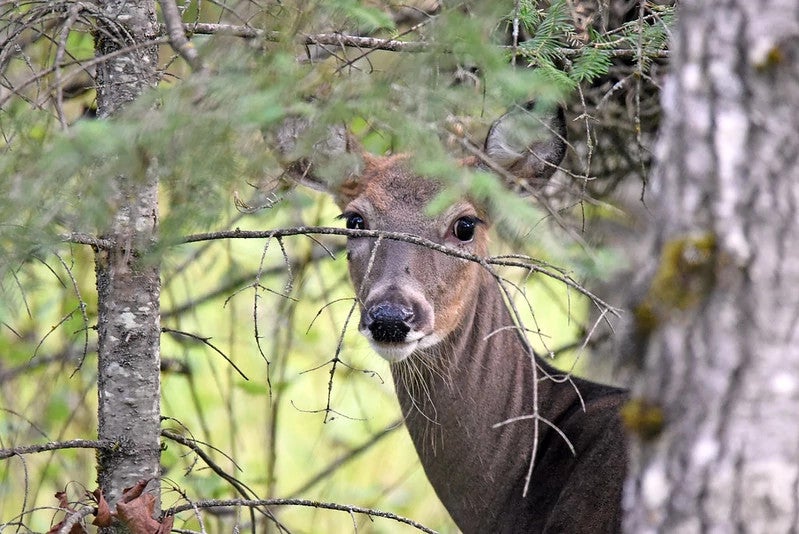Wisconsin’s white-tailed deer population is the highest it’s been in decades.
With the opening of gun deer season this weekend, that may seem like good news for hunters, but advocates say the overpopulation is taking a toll on the health of ecosystems and the deer themselves.
“We are getting to the point where it’s impacting the long term sustainability of some of the systems the deer — and we (humans) — rely on,” said ecologist Don Waller at a panel hosted by the conservation group Wisconsin Green Fire on Wednesday.
News with a little more humanity
WPR’s “Wisconsin Today” newsletter keeps you connected to the state you love without feeling overwhelmed. No paywall. No agenda. No corporate filter.
Waller said that mismanaged habitats, milder winters, deer feeds, fewer predators and regulated hunting have all contributed to the rapid population growth. And it’s causing habitat destruction, crop damage, vehicle collisions and disease — all of which threatens the long-term survival of white-tailed deer in Wisconsin.
Overpopulation leads to over-browsing and habitat destruction, specifically forestland. Waller said a single deer eats about 7 to 8 pounds of plant material a day, including crops and young sapling trees. This prevents forest regrowth and can alter the landscape significantly over time.
“This is not a local effect. It’s not specific to one or a few species or one or a few years. This is chronic, pervasive and has long-lasting impacts on the composition and diversity of our future forests,” said Waller.
In one study of three state parks, Waller said deer over-browsing contributed to a 50 percent loss of plant diversity over the past 50 years.
Tom Hauge is a wildlife biologist who worked with the Wisconsin Department of Natural Resources for nearly 40 years and contributed to a report Wisconsin Green Fire published in June.
He said part of the problem is that Wisconsin’s deer management framework doesn’t fully consider ecological capacity when setting target deer populations and harvest goals.
The current framework, developed in 2011 under former Gov. Scott Walker, dissolved long-used deer management zones in favor of county-based Deer Advisory Councils. But Hauge said the boundaries of a county don’t always align with the boundaries of a natural ecosystem. In the state’s forests, overbrowsing leads to habitat destruction, while on the state’s farmland, smaller deer harvests lead to crop damage and vehicle collisions.
Hauge also said much of the current population and harvest goals are based on an outdated 1995 environmental assessment.
“Science has progressed a great deal in the last 27 years and we must recognize that the deer herd is tied to the habitats that they live in,” said Hauge.
He recommends developing a new strategic plan that reevaluates the ecological capacity of Wisconsin’s current landscapes, and provides the DNR and county Deer Advisory Councils more freedom to manage populations.
In the past, the DNR was able to adjust to population fluctuations by opening an October firearm season and utilizing the earn-a-buck program in which hunters had to harvest a doe before they could harvest a buck.
“(Earn-a-buck) is the most effective herd reduction tool that we’ve ever had, and without it I’m not sure how we’re going to get on top of deer herds, especially in privately held lands,” said Keith McCaffery, a deer research biologist who worked on the Green Fire report.
Walker repealed earn-a-buck and similar restrictions as part of his 2011 reorganization of deer management, leaving few options for herd reduction.
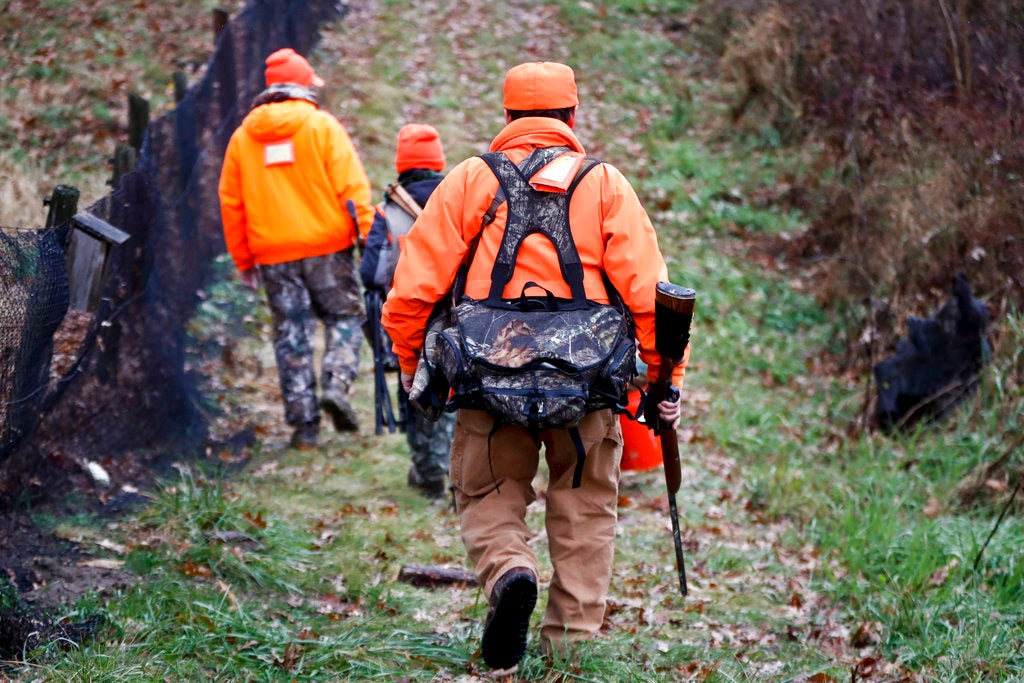
And scientists say hunters play a critical role in maintaining a healthy-sized deer population in Wisconsin. And while more hunting may seem like a surprising conservation strategy, it’s common ground for scientists and hunters.
Noah Wishau from Wisconsin Backcountry Hunters and Anglers, or WBHA, said there has always been a degree of tension between hunters and wildlife conservationists
“Hunters have always been very hesitant to listen to people who we don’t think know as much as us,” said Wishau. He added that hunters sometimes scoff at scientists who weigh in on deer management but have no experience sitting in a tree stand for hours.
But Wishau said scientists have spent a lot of time in the woods, and their conservation efforts are a big part of why deer hunting is possible.
“A hundred years ago, we weren’t talking about the overabundance of deer being a problem. We were talking about the fact that there weren’t any deer,” said Wishau.
Population control methods dating back to the 1950s and 1960s helped stabilize deer populations enough so that the hunting industry could thrive. Now many of those measures are no longer in place.
“If we don’t start listening to the experts — or keep listening to the experts and realizing that because we’ve listened to the experts throughout our history, we’ve gotten the opportunities that we all have — we’re going to continue to commit the same mistakes that we’ve committed in the past and run into issues that none of us wants,” said Wishau.
Chronic wasting disease is ‘pretty much here to stay’
One of the biggest threats to the deer population continues to be chronic wasting disease (CWD) — a neurological disease that spreads easily among deer and is always fatal.
According to the Green Fire report, the disease was first detected in Wisconsin in 2002, but has now spread to 32 counties with infection rates up to 50 percent.
“CWD is a serious threat to the deer herd in Wisconsin and the prognosis is really bad if we stay on the current course,” said Green Fire science director Sarah Peterson.
Since 2011, that course has been a fairly passive one, with voluntary testing of harvested deer and minimal effort to directly stop the spread. And advocates say this is why CWD has been able to get such a foothold in Wisconsin.
“It’s pretty much here to stay,” said Mike Samuel, a University of Wisconsin-Madison professor of forest and wildlife ecology. “We’re going to have to learn to live with it, which hopefully means being able to manage it at low enough prevalence that it’s not interfering with our herd size and our hunting abilities.”
The disease is spread through bodily fluids, making salt licks and feeders a hotbed for new infections. It’s most common among male deer, so yearling bucks who leave to join new herds often drive transmission to new areas.
Samuel said these areas of new detection are the best bet for reducing the spread of CWD, but doing so will require a much more aggressive approach from the state.
Advocates recommend more research and robust testing of both living and harvested deer, as well as increased harvesting of antlerless deer.
The proposed “Healthy Herd, Healthy Hunt” package of legislation would provide funding for CWD research, testing kiosks and carcass disposal.
Both Green Fire’s Peterson and WBHA’s Wishau encouraged hunters to have their harvested deer tested for CWD and to dispose of carcasses properly. Hunters can find a map of testing and disposal sites on the DNR website.
But all of these recommendations for a more robust response to deer conservation come with a price tag that advocates say far exceeds the DNR’s current budget. So advocates are pushing for an increase to the DNR’s budget and staff capacity for deer conservation efforts, which has remained relatively static since the 1950s.
“Deer conservation is not free. For far too long, we’ve neglected to invest in it,” said Peterson.
According to the Green Fire report, the majority of funding for deer conservation efforts comes from hunting license fees and taxes from the sale of hunting equipment.
The state’s 630,000 deer hunters generate $2.2 billion annually, but according to a report from the Wisconsin Policy Forum, hunting license sales dropped by 5.8 percent from 1999 to 2017.
Wishau said the industry is seeing a real decline in new hunters. The sport can be expensive, families have sold off hunting land, and younger generations are interested in other things.
Given the role hunters play in maintaining healthy deer populations, this has conservationists concerned as well. One of the recommendations in the report is a strategic plan to recruit, retain and reactivate deer hunters in Wisconsin.
Much like ecological balance governing deer habitats themselves, hunters, scientists and legislators all play a role in conserving the state’s population of white-tailed deer for future generations.
Wisconsin Public Radio, © Copyright 2025, Board of Regents of the University of Wisconsin System and Wisconsin Educational Communications Board.

